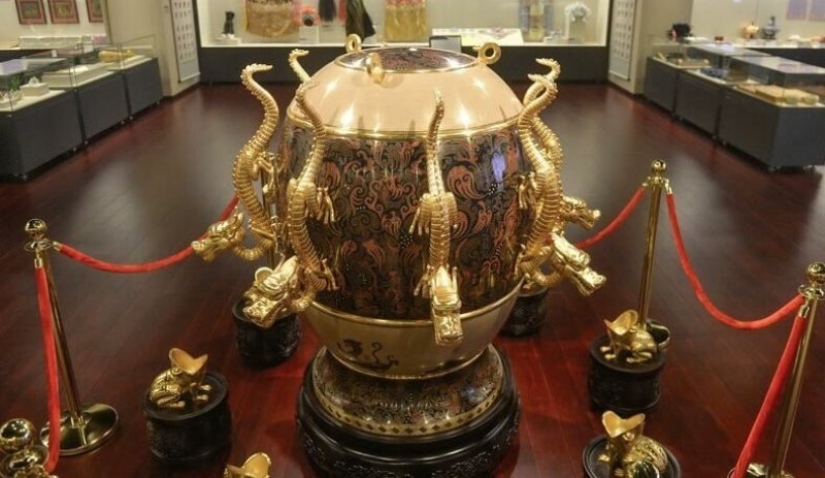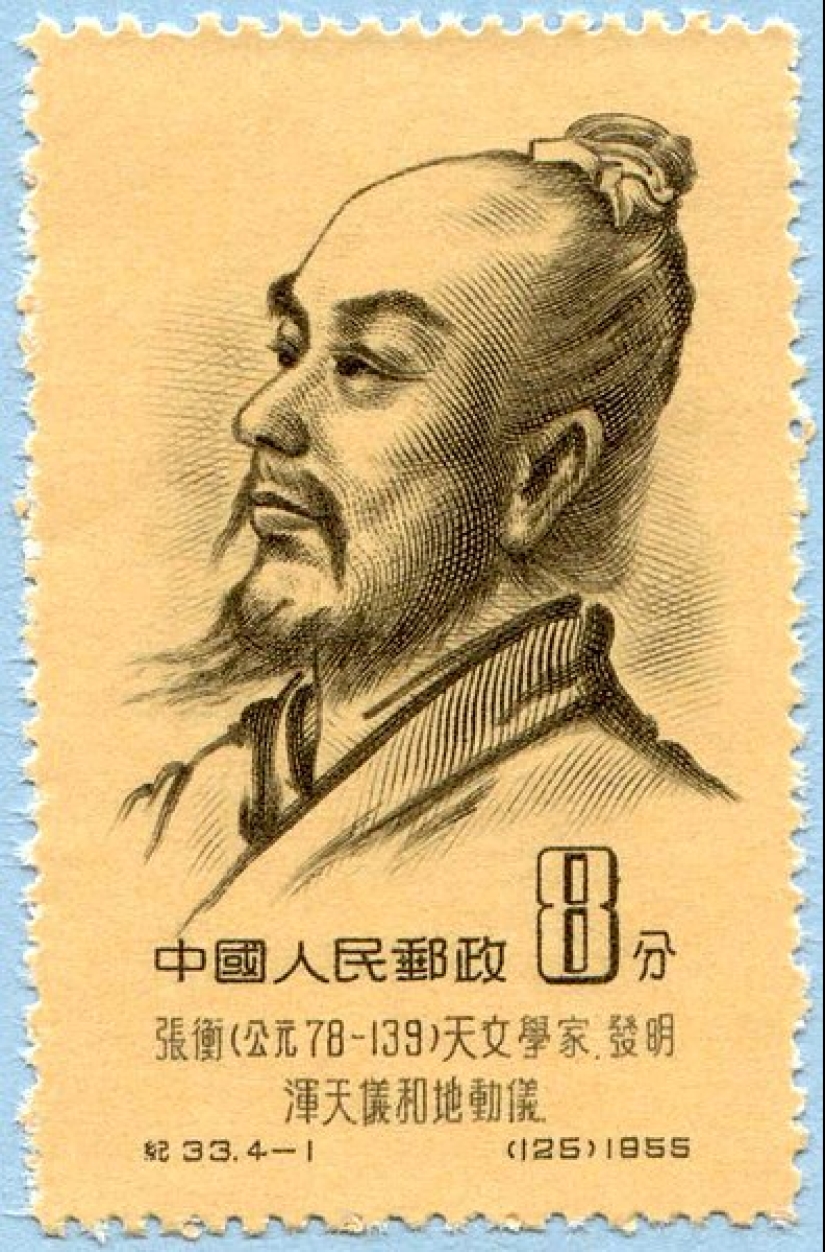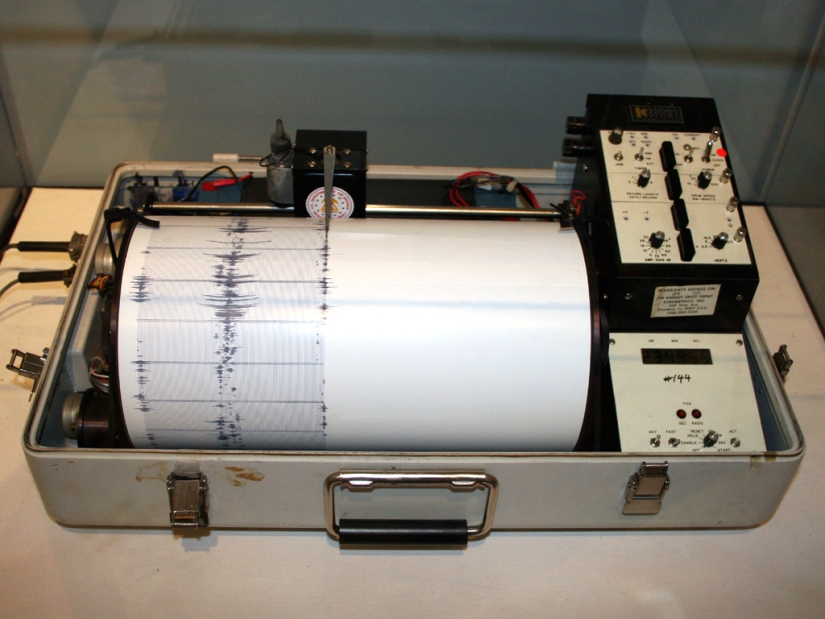How the world's first seismograph, Zhang Heng's, worked, whose secret has never been revealed
Categories: Asia | History | Science
By Pictolic https://pictolic.com/article/how-the-world39s-first-seismograph-zhang-heng39s-worked-whose-secret-has-never-been-revealed.htmlIt is known that a unique civilization has been developing on the territory of China for more than one millennium. The Chinese gave the world paper, gunpowder, fireworks and many other inventions that people have been using for centuries. There are other amazing Chinese developments that, unfortunately, have been lost. One such development is Zhang Heng's incredible device, which could determine in which part of the vast Celestial Empire an earthquake occurred.

In 132 AD, a devastating earthquake occurred in one of the provinces of China. People urgently needed help, and a messenger was sent to Beijing. He rode for several days, drove several horses and arrived at the imperial court even earlier than planned. But the emperor had already known about the disaster for several days. How was this possible in a time when there was no radio communication? It's simple - Zhang Heng's seismograph notified the emperor about the natural disaster.

Many regions of China are located in seismically active zones. Historical chronicles tell of earthquakes that wiped out entire cities. For the Han Empire, such disasters posed an additional threat - disasters were often used by external enemies to attack. Raids on damaged cities were common and this worried the emperors.
After the earthquake, it was necessary to immediately send assistance, material and military. In order not to depend on messengers, who were relatively slow and could die on the road, a one-of-a-kind seismograph was created for the emperor. This device accurately determined in which part of the empire the earthquake occurred.
The seismograph was invented by the Chinese scientist Zhang Heng. He was born in 78 AD in the family of a poor provincial official. Since childhood, the boy gravitated towards knowledge and devoted all his time to study. The efforts were not in vain, and by the age of 37, Zhang Heng had made a brilliant career, becoming a court historiographer and astrologer.

The scientist left a noticeable mark on the history of science in China. Zhang Heng improved the geographical maps of the empire and made significant contributions to the development of mathematics and astronomy. He was the first to state that moonlight is reflected sunlight. However, his most important invention was the seismograph.
The idea for the device arose after an earthquake that caused serious damage to the capital, including the imperial palace. Zhang Heng worked on the seismograph for several years, and in 132 the device proved its effectiveness. No one believed that the device, which looked more like a work of art than an accurate instrument, would be able to “see” an earthquake hundreds of kilometers away. But the seismograph really worked.

Zhang Heng's seismograph was an impressive copper vessel, decorated on the outside with eight dragons oriented to the cardinal directions. Each dragon held a copper ball in its mouth. At the base of the device were eight toads with their mouths wide open, one for each dragon.
When the seismograph detected tremors from one side, the dragon responsible for this direction dropped a ball from its mouth. The ball fell into the toad's mouth, making a ringing sound that was heard throughout the palace. The exact mechanism of the device is unknown, and surviving descriptions often contradict each other. Scientists suggest that there was a sensitive pendulum inside, surrounded by eight levers connected to dragons.

Earthquakes cause ground vibrations that can be felt hundreds and even thousands of kilometers away. People may not notice them, but the devices detect the slightest movements. The pendulum of Zhang Heng's seismograph deviated from the vertical and touched one of the levers. This activated a spring mechanism that pushed the ball out of the dragon's mouth.
The emperor appreciated the invention of the court scientist. From that moment on, the seismograph always stood in the palace and regularly indicated the direction where the misfortune happened. But neither this great invention nor many smaller discoveries saved Zhang Heng from his ill-wishers. Four years after the creation of the seismograph, due to court intrigues, he fell into disgrace and was sent to govern a remote province. There he spent the rest of his life, among books, maps and ingenious devices.
The emperor highly appreciated the invention of the court scientist. From that moment on, the seismograph always stood in the palace, accurately indicating the direction where the earthquake occurred. However, neither this great invention nor many other discoveries saved Zhang Heng from his ill-wishers. Four years after creating the seismograph, he fell into disgrace due to court intrigue and was sent to govern a remote province. There he spent the rest of his life among books, maps and ingenious instruments.
Unfortunately, Zhang Heng's seismograph has not survived to this day. Numerous instruments presented in museums and collections are modern replicas created according to descriptions from ancient treatises. They, of course, do not work, since the drawings of the sensitive mechanism were lost.

Enthusiasts have tried many times to recreate the device using modern technology. But none of these mechanical seismographs could detect even the nearest tremors. At best, the balls fell chaotically, not even indicating an approximate direction. So the secret of the ancient Chinese seismograph is most likely lost forever.
Recent articles

In November 69 BC, she was born Cleopatra, the last Queen of Egypt from the Macedonian dynasty of the Ptolemies. Cleopatra, perhaps ...

Explosions of smartphone batteries and short circuits in sockets no longer become a sensation, but few people know that the danger ...

It is believed that the appearance of gray hair — it is a sign of aging, the gradual extinction of the organism. Many ...